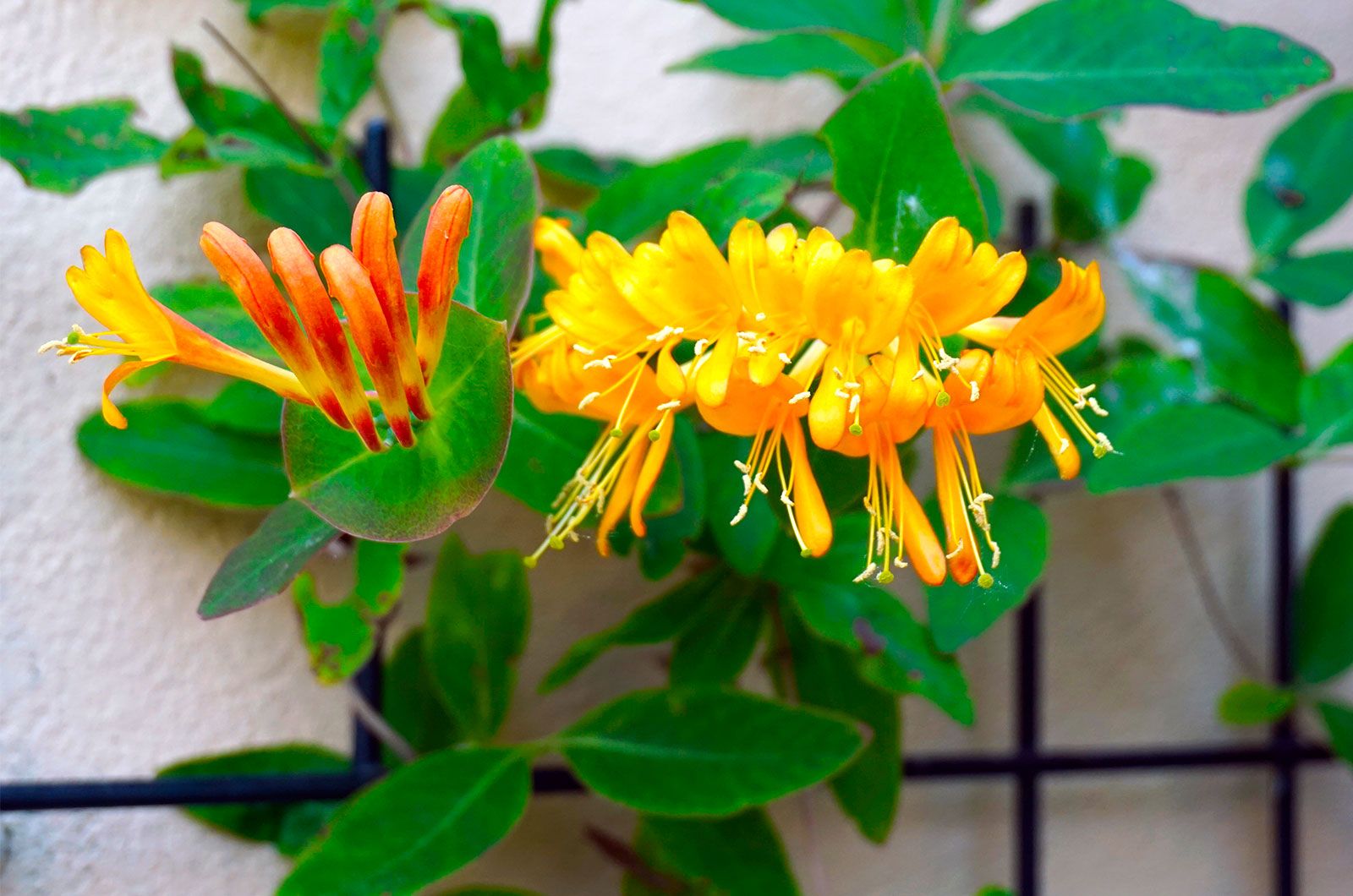With their delicate, trumpet-shaped blooms and sweet scent, honeysuckle flowers are iconic harbingers of spring and summer. Over 180 honeysuckle species exist, ranging from dainty vines to upright shrubs. If you want to identify and appreciate the beauty of honeysuckle flowers, studying pictures is invaluable.
Here’s an image guide to the key features and varieties of these iconic flowers
Trumpet Shape
All honeysuckle flowers share a characteristic tubular, trumpet shape. The five petals are fused into a long slender tube that flares open at the end into a round mouth. This trumpet shape gives the flowers an old-fashioned romantic vibe.
Color Range
While white is the most common, honeysuckle flowers appear in a wide spectrum of colors:
-
White – Most species like woodbine have creamy white flowers.
-
Yellow – Varieties like Japanese honeysuckle (Lonicera japonica) bear bright golden yellow blooms.
-
Red – Scarlet varieties like coral honeysuckle (L. sempervirens) have vivid red or orange-red flowers.
-
Pink – Some bush honeysuckles like L. morrowii produce pastel pink flowers.
-
Purple – Unusual purple or violet-tinged varieties also exist.
Twin Lips
Some honeysuckle flowers have a two-tone appearance, with the flaring mouth differently colored than the tubular base. For example, Japanese honeysuckle has a white to yellow base with twin pink-red lips.
Clusters and Pairs
Flowers may stand solitary or in groups. Vine types often bear pairs or whorls of blooms along the stem. Shrubby kinds can form dense clusters at branch tips, like the dozen or more together in Amur honeysuckle.
Berry Fruits
After flowering, honeysuckle often forms colorful berry-like fruits, either red, orange, or black. These translucent berries contain the small seeds. Young fruit may have a frosted, waxy look.
Aromatic Scent
Many honeysuckle flowers emit a lovely, sweet perfume. Some tropical species like L. suaveolens are intensely fragrant, while other kinds have more subtle aromas. Scent is strongest in the evening.
Nectar Guides
Inside the flower tube are nectar guides, which are markings that direct pollinators to the nectar. These help bees, hummingbirds, and other pollinators access the high-sugar nectar.
Flowering Season
Depending on species and cultivar, honeysuckle will bloom during spring, summer or fall. Winter honeysuckle flowers during late winter into early spring, one of the first plants to flower.
Growth Habit
Honeysuckles may be vines that climb trellises or fences or upright shrubs and small trees. Identifying the form helps distinguish the type.
Foliage
Leaves are opposite, simple, and oval on vining honeysuckles. Shrub honeysuckles have blue-green foliage that lacks a pointed tip. Identifying leaves helps ID the species.
With their graceful, elegant flowers in shades of white, yellow, pink, orange, red, and purple, it’s no wonder honeysuckle has been a garden favorite for centuries. Studying pictures helps to appreciate the many different species and cultivars and their unique characteristics.
Plant This Honeysuckle, Not That Honeysuckle!
FAQ
What does American honeysuckle look like?
Is honeysuckle a bush or tree?
How to tell if a plant is honeysuckle?
What does honeysuckle symbolize?
- The Ultimate Guide to Growing Strawberries in Raised Beds - August 8, 2025
- No-Dig Garden Beds: The Easiest Way to Grow a Beautiful Garden - August 6, 2025
- How to Protect and Preserve Wood for Raised Garden Beds - August 6, 2025

